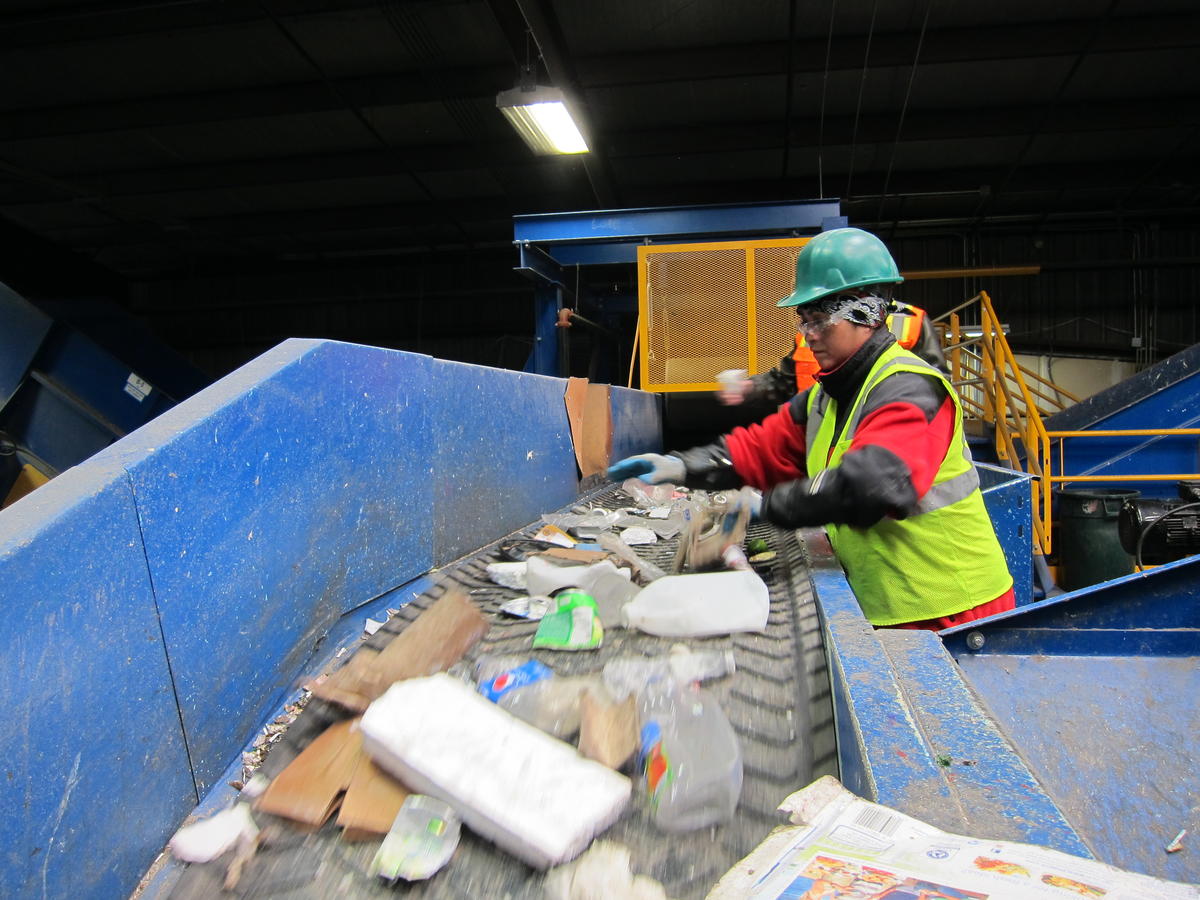The Local newsletter is your free, daily guide to life in Colorado. For locals, by locals.
Have you ever wondered where your recycling goes? The process—which is so efficient, a crumpled beer can might be back on the shelves as a fresh Coors Light within 90 days—is a mystery to most citizens. Curious about the elusive journey our recycling takes each week, we headed 15 minutes north of Denver to Alpine Waste & Recycling. The plant is one of the state’s most advanced, and the first recycling and waste management system to accept Styrofoam and milk cartons. Like Alpine, most recycling companies in Colorado operate automated recycling “streams,” which are people-operated assembly lines that sort the aluminum from the plastics and the cardboards, and so on. Each resource is then compressed into large bricks (called “bales”) and sent off to make new items, like craft brew cans and stationery.


Compressed aluminums cans are repurposed into new cans and back on store shelves in just 90 days.
As a city resident, you basically have two jobs: 1) Recycle. If you don’t, you’re hurting the Earth. 2) Don’t impede the system with non-recyclables. “The issue is that each recycling facility accepts different things,” explains Juri Freeman, president of the Colorado Association for Recycling and senior consultant for Resource Recyling Systems. “Just because there is a #3 with a triangle symbol, doesn’t mean you can recycle it.” Each county has unique guidelines—Boulder and Denver each have their own—which can create confusion for well-intended recyclers. So, if you innocently recycle the wrong item, does it matter?
Yes. It really matters.

Members of the 20-plus-person assembly line sort recycling.
When a non-recyclable item gets mixed into the stream of plastics and cardboard, Alpine’s team of about 20 members has to manually pull it out; worse, if an item slips by, it could halt the entire operation for hours. “Every other day [the system] gets jammed up,” Brent Hildebrand of Alpine says. The workers attempt to pull out every non-recyclable they see while simultaneously sorting incoming recycling. When a pesky plastic bag or a car part (yes, that really happened) gets missed and stops the process, the team must wait until they can figure out how to safely remove the offending item and get the machinery moving again. Watch the video below to see the sorting process in motion.
So, don’t be an eco-bummer. Here are three items recycling plants want you to put in your trash pile:
Plastic Bags: Plastic garbage bags and grocery store bags will jam the sorting machine, stopping operations for hours until someone can climb inside and remove it. But plastic bags also shouldn’t be put in the trash. They can end up in water sources, harming fish and other wildlife, and many versions don’t ever completely decompose. Your best bet is to gather the bags and take them to a local grocery store that has a recycling bin specifically for plastic bags. Or better yet, invest in some reusable bags.
Metal: Unless it’s tin or aluminum, sort it out. Hildebrand sees a myriad of creative metal items like grills, car parts, and gate latches. Some large metals do worse than jamming a machine—they have the potential to break the system.
Bottle Caps: The metal caps atop fancy sodas and beer bottles are, well, metal. Keep the glass bottles in the bin, those can be recycled indefinitely which is pretty mind boggling, but the caps must go to the trash.
Pro Tip: Always screw plastic caps onto plastic bottles. Plastic bottle caps, while recyclable, are too small to be sorted and always end up with the waste.
This Earth Day, make a conscious effort to recycle smarter by checking your local guidelines—and remember that every time you toss something into your recycling bin, you’re handing it to a team of people working hard to sort and save the precious, reusable materials.








